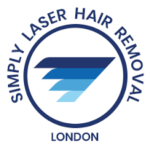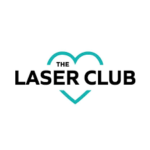

Top Laser Tattoo Removal Services
London


Simply Laser Hair Removal & Skin Clinic
Address: 4 Streatham St, London WC1A 1JB


Pulse Light Clinic
Address: 5 Percy St, London W1T 1DG


Premier Laser & Skin Soho Clinic
Address: 177 Wardour St, London W1F 8WX


London Laser Clinic
Address: 12, Laser Clinic, Holmstall Ave, Burnt Oak Broadway, London HA8 5HX


New Era Skin Aesthetics
Address: 82 King St, Manchester M2 4WQ


Sk:n
Address: 7 St James’s Square, Manchester M2 6DN


The Laser Club
Address: Boombae, 480 Chester Rd, Manchester M16 9HE, United Kingdom


ND Skin Clinic
Address: 245 Bury Old Rd, Prestwich, Manchester M25 1JE
Top Laser Hair Removal Clinics from Other Locations
FAQs
How does laser tattoo removal work?
Laser tattoo removal is one of the standard methods to remove unwanted tattoos. The practitioner guides the laser over the tattooed area during the tattoo removal session. The laser pulses light energy during the process, which is different from the laser used in laser hair removal, which pulses a continuous beam of light.
During a laser tattoo removal procedure, the practitioner guides a laser over the area of the tattoo. Unlike a laser pointer that produces a continuous beam of light, tattoo removal lasers produce pulses of light energy. Each pulse of energy goes through the skin and into the tattoo ink. The tattoo ink droplets heat up and break into tiny pieces as they absorb the energy. Then, in the weeks after the laser tattoo treatment, the body’s immune system moves the tattoo ink particles out of the area, making the tattoo look lighter. That’s why laser tattoo removal takes various sessions to get the best results. Plus, tattoos have many colours, and they reflect different types of light at different speeds.
How long does laser tattoo removal take?
Laser tattoo removal takes a minimum of 12 to 24 weeks. Tattoo removal is not an instant fix. It is not as simple as having a tattoo. Most tattoos require 4 to 10 tattoo removal sessions to remove the tattoo altogether, and the treatment sessions must be spaced at least 6 weeks apart.
Patients must wait between treatments, as their bodies need time to flush out the broken tattoo ink from the tattooed area. To flush out the ink, the immune system cells, called “phagocytic,” move the ink particles to lymph nodes, where the colours stay. As the body can only flush out the ink at a certain speed, it’s best to wait as long as possible between laser tattoo removal sessions to get the most out of each treatment session. Also, the time spent waiting lets any scabs or blisters heal, which lowers the risk of treating the area too much and having unwanted side effects.
Will laser tattoo removal leave a scar?
When laser tattoo removal is done by a trained and experienced professional, it minimises the risks of getting a scar. However, there is always some degree of risk, and individual responses can vary. You should prepare your skin before having a laser tattoo removal session and give your skin time to heal between the tattoo removal sessions to avoid scarring. Patients must wait at least 6 weeks between the sessions, or it might cause skin inflammation and scarring. Having scars might make it more difficult for the laser to break down the remaining ink properly if you haven’t finished your tattoo removal sessions yet. There are many things you can do to avoid scarring:
- Book at a professional clinic – A skilled and experienced laser technician or healthcare professional can help reduce the risk of scarring after laser tattoo removal.
- Care about your health – drink enough water before and after your sessions to speed up the skin’s recovery. You should also take good care of your skin before and after laser tattoo removal. You should take multivitamins that can help boost your overall health, such as vitamin E and zinc, which speed up the skin’s healing time.
- Protect your skin – Avoid exposing the area treated to the sun after the laser tattoo removal session. You should wear sunscreen on the areas treated, as the skin is more light-sensitive after the laser session. Doing so can help avoid scars and reduce cancer risk. You can apply Vaseline to the treated area to prevent scarring and dryness.
- Moisturise your skin – the moisturiser is an essential part of our skincare routine. Having this done is even more critical after getting a new tattoo or cosmetic treatment. It is very important to keep the skin hydrated. Check out the best tattoo moisturisers that soothe and protect the skin.
What does laser tattoo removal feel like?
Laser tattoo removal feels like the pain of a bad sunburn, and the laser pulses during the tattoo removal session feel like a rubber band snapping against your skin. It is a bit painful, and it is very similar to the pain you feel during laser hair removal.
Can laser tattoo removal cause cancer?
The Skin Cancer Foundation has reliable findings showing that laser tattoo removal does not directly cause skin cancer. No evidence exists to suggest otherwise. However, like laser hair removal, laser tattoo removal can make your skin more sensitive to light after the session, increasing the risk of sun damage. You can avoid that by using sunscreen and avoiding direct sun exposure to the affected areas. Wear protective clothes on the areas treated if you must go out in the sun. The tattoo pigments are not related to skin cancer.
Does the NHS Remove Tattoos?
The laser tattoo removal treatment is rarely available on the NHS.
Resources
